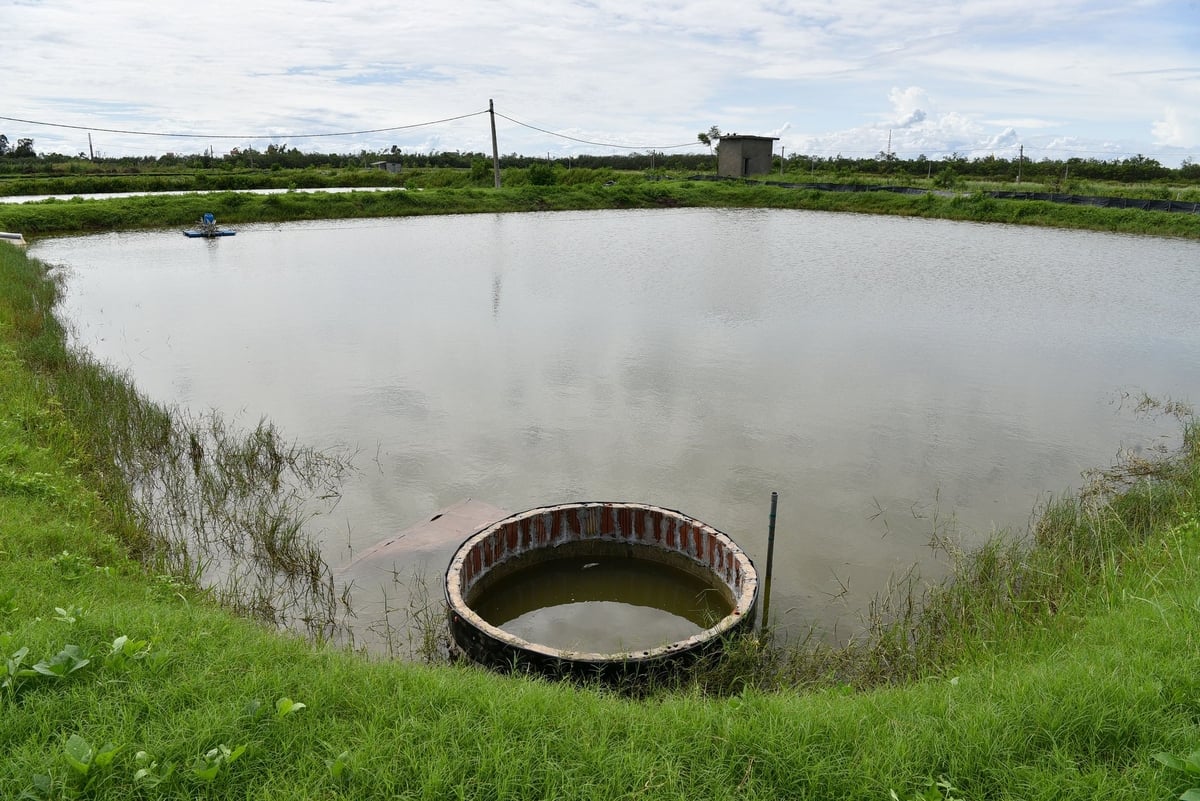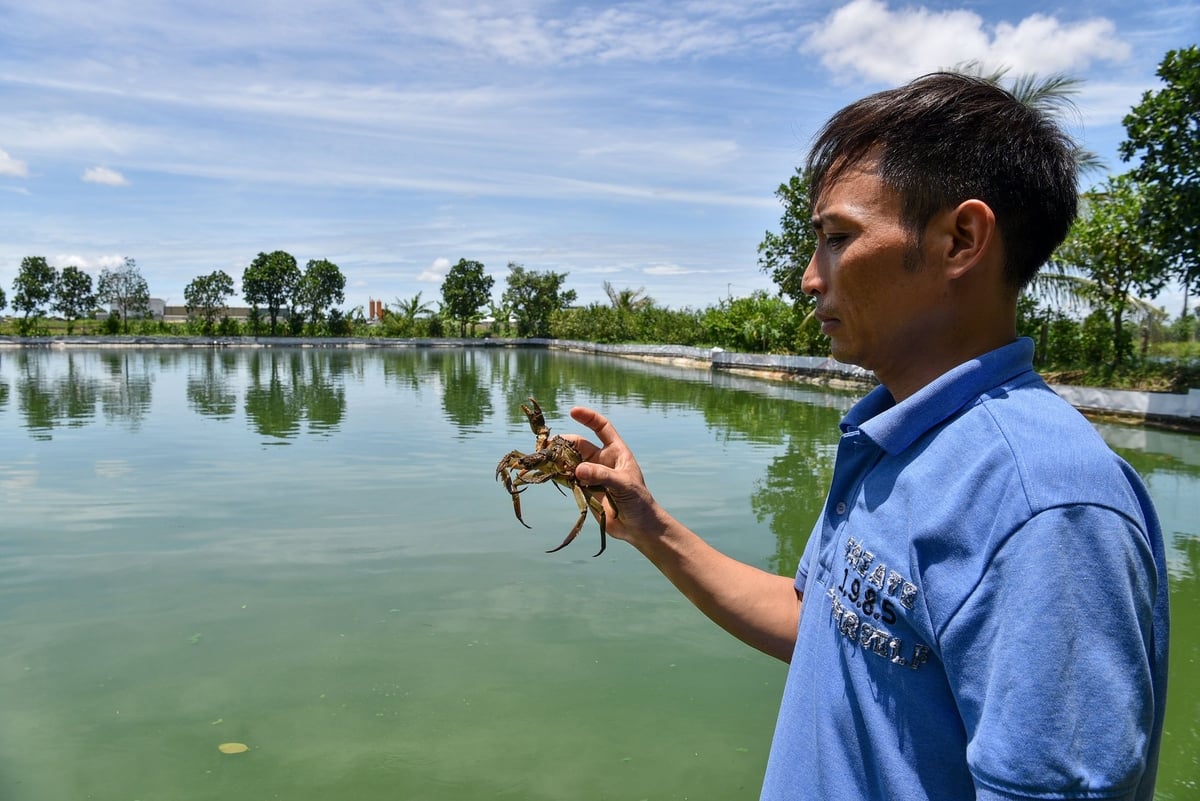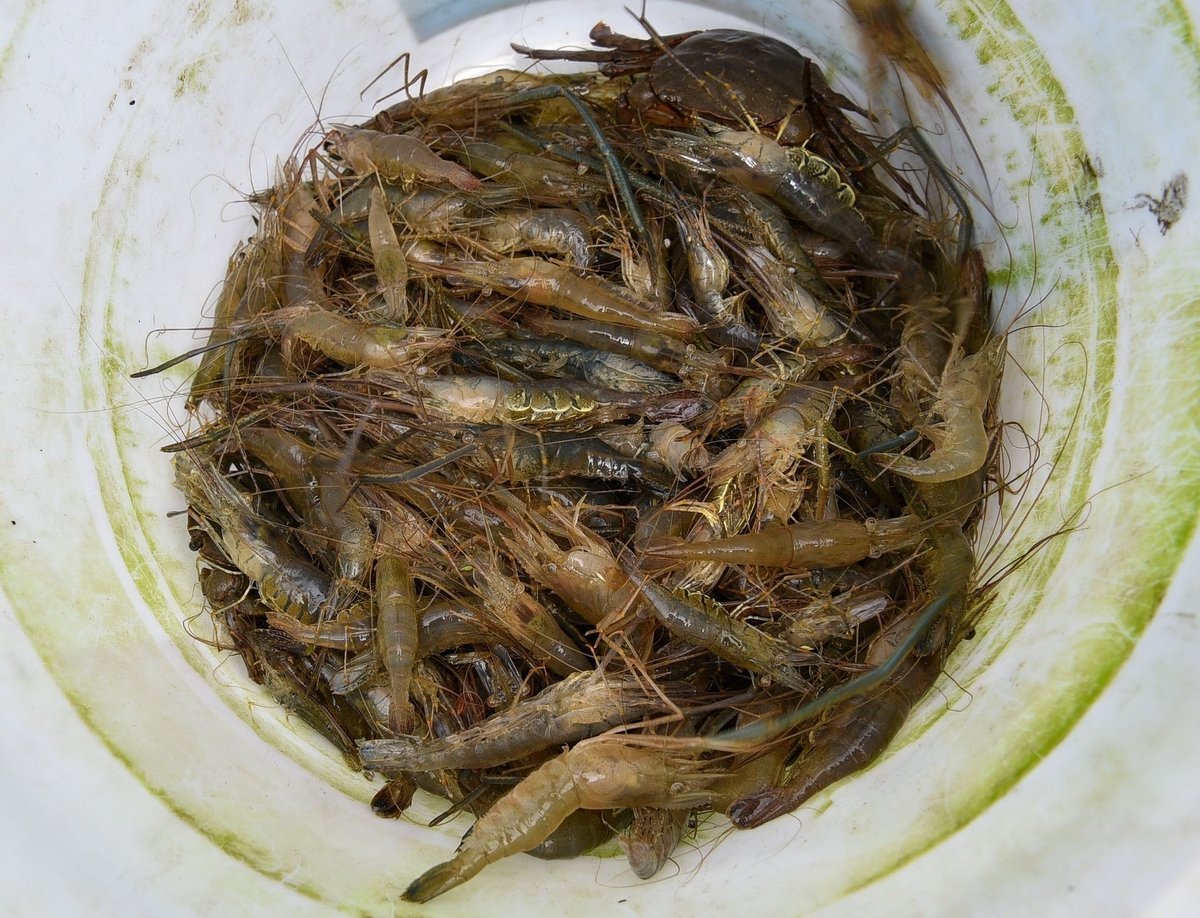December 1, 2025 | 10:45 GMT +7
December 1, 2025 | 10:45 GMT +7
Hotline: 0913.378.918
December 1, 2025 | 10:45 GMT +7
Hotline: 0913.378.918

Visitors at Mr. Tran Van Van’s ca ra (hairy crab) farm in Tien Hai, Hung Yen Province. Photo: Duong Dinh Tuong.
Mr. Tran Van Van, Director of Minh Phu International Joint Stock Company, explained to me why many ca ra farms in Vietnam fail. First, there is no proper farming technique. For instance, people often assume crabs like fish, so they chop up fish and throw it into the pond, or grind fish with pellets and cornmeal for feed. This pollutes the water and lacks the essential nutrients crabs need.
Second, the quality of the crab stock. In the process of raising hairy crabs, Chinese farms usually cull about 30% of them and sell them at markets for soup. Many Vietnamese farmers, attracted by the lower price, buy these to raise. Third, they ignore maintaining pond water quality. Ceratophyllum is either overgrown or entirely absent; they lack knowledge of how to manage the pond bottom. Aquaculture drugs are used indiscriminately and without caution. Due to poor yield and productivity, many farms have ceased ca ra farming after a period.
To verify Mr. Van’s points, I called Mr. Do Danh Hung, a farmer with dozens of hectares of rice and ruoi in Bai Sau, Ngu Phuc (former Kien Thuy District, Hai Phong). Last year, he converted 3–4 hectares to raise ca ra using stock imported from China. However, after nearly a year, he faced major losses, and the remaining crabs failed to grow. He confirmed that the project was a failure.

A small corner of Mr. Tran Van Van’s over-100-hectare ca ra (hairy crab) farm. Photo: Duong Dinh Tuong.
In 2024, Mr. Luu Van Dung – owner of a farm in Quang Hung (former Phu Cu District, Hung Yen) – released more than 30,000 ca ra fry collected from wild river catchers. After the farming process, only about 10,000 survived due to uneven sizes. Large crabs cannibalized the smaller ones, and the wild fry were difficult to care for. At the end of the season, he harvested nearly one ton of commercial ca ra, sold at an average price of over VND 400,000 per kilogram, still earning a modest profit. However, this year he stopped farming because he could not compete with commercial hairy crabs imported from China, priced at only around VND 300,000 per kilogram, and returned to raising shrimp and fish.
In the conversion area of Nam Tien Hung Commune, Hung Yen Province, there are 25 households. Previously, they mainly raised traditional fish like grass carp, black carp, silver carp, and common carp. Due to low selling prices and unstable markets, after visiting Mr. Van’s ca ra model, Mr. Bui Quoc Viet boldly experimented. His 4,000 m² pond was drained, the bottom treated, ceratophyllum planted, an oxygen system installed, plastic lining added around the edges to prevent crab escape, and fry were released. The total investment for this trial was around VND 70 million.

Without ceratophyllum, the water in Mr. Bui Quoc Viet’s pond turned green due to algae. Photo: Duong Dinh Tuong.
During the farming process, as the ceratophyllum grew too well, Mr. Bui Quoc Viet released grass carp to eat the excess, only for them to consume it entirely. When green algae appeared in the pond, he treated it with chemicals, further damaging the remaining ceratophyllum.
Mr. Viet’s pond – where ceratophyllum had been thriving and the ca ra were growing well – now faces a serious risk of crop failure. Instead of thinning the ceratophyllum when it became too dense, he introduced grass carp. These fish altered the water environment: they consumed all the ceratophyllum and defecated into the pond, causing an algae bloom.
When algae appear, the proper response should be to change the water and treat the pond bottom to prevent pollution, while lowering the water level to help the remaining ceratophyllum continue photosynthesis and recover. However, he opted for algae-killing chemicals, with disastrous consequences: mass die-off of ceratophyllum and loss of ecological balance in the pond. Like land plants, ceratophyllum needs sunlight for photosynthesis. When the pond water becomes too murky, and algae grow too thick, ceratophyllum cannot photosynthesize and dies gradually. This means losing both a natural water purifier and a critical food source for shrimp, small crabs, and other benthic organisms.

Shrimp caught from the ca ra farming pond of Mr. Tran Van Van. Photo: Duong Dinh Tuong.
Therefore, ca ra farming requires constant monitoring of factors such as weather, water color, animal health, and leftover feed. On rainy and windy days, when atmospheric pressure is low and oxygen levels drop, farmers must turn on aerators and reduce or cut feed rations. Contrary to some misconceptions, cool rainy weather does not mean oxygenation is unnecessary. It is precisely under these conditions that proactive water management is key to stabilizing the pond environment and preventing disease or financial loss.
According to Mr. Van, unlike salmon, which live in the sea when young and return to streams to spawn, hairy crabs live in freshwater when young and migrate to the sea to reproduce. The lifecycle of a farm-raised hairy crab, from hatching to harvest, is about two years, requiring around 19–21 molts to reach maturity. However, a wild hairy crab caught at a small size may already be two years old due to insufficient nutrition. This means it has already completed its molting cycle, is mature, and will not grow any further, even if raised.
Thus, unlike artificially bred hairy crabs, which are uniform in age and size, wild-caught crabs vary in both. If buyers cannot distinguish the crab’s age and growth potential, raising them will involve high risks.
* USD 1 = VND 26,400. Source: Vietcombank.
Translated by Huong Giang

(VAN) The inevitable path forward is to reorganize production along the value chain, utilizing cooperatives as the core, enterprises as the driving force, and farmers as the central subjects.

(VAN) On November 28, Minister Tran Duc Thang, together with China's Minister of Agriculture and Rural Affairs Han Jun, chaired the 2nd meeting of the Viet Nam - China Agricultural Cooperation Committee.

(VAN) Forest carbon credits are only accepted when they ensure absolute environmental integrity, additionality, permanence, and transparency.

(VAN) Viet Nam partners with Beijing on controlling air pollution, cross-regional management, high-tech monitoring and relocating polluting facilities.

(VAN) With a USD 50 million investment, Australia is partnering with Viet Nam to operate its first public electric bus fleet and develop a nationwide EV charging network.

(VAN) On November 28, in Beijing, Minister Tran Duc Thang met Minister of Ecology and Environment of China Huang Runqiu, to share experience on environmental protection.
/2025/11/28/0950-2-120557_751.jpg)
(VAN) The recent flood spell in the South Central region clearly reflects the characteristics of natural disasters in 2025, which are compound, prolonged, and amplified.